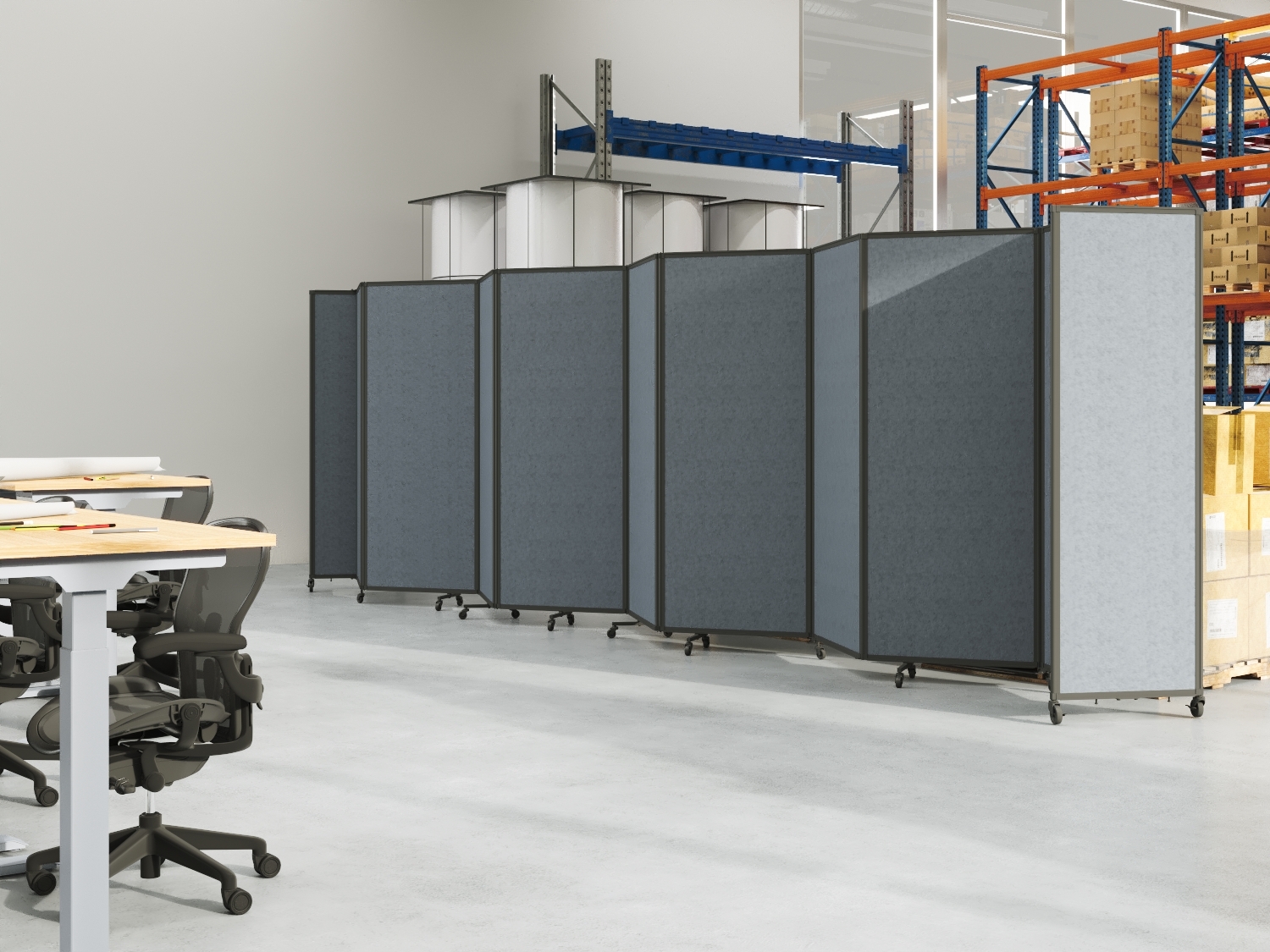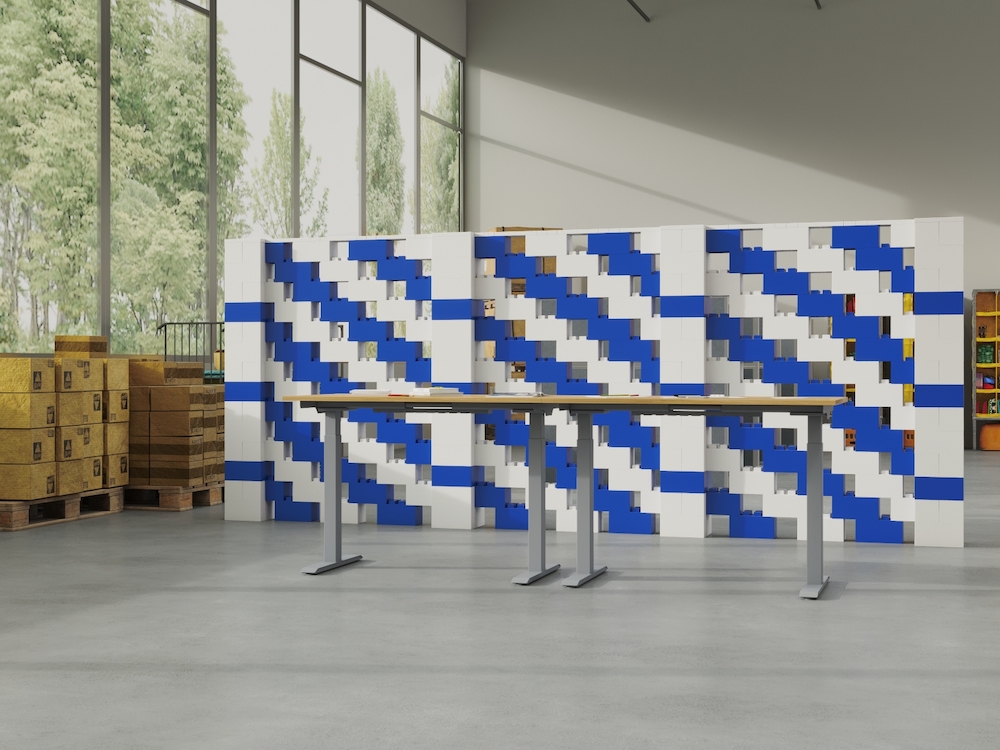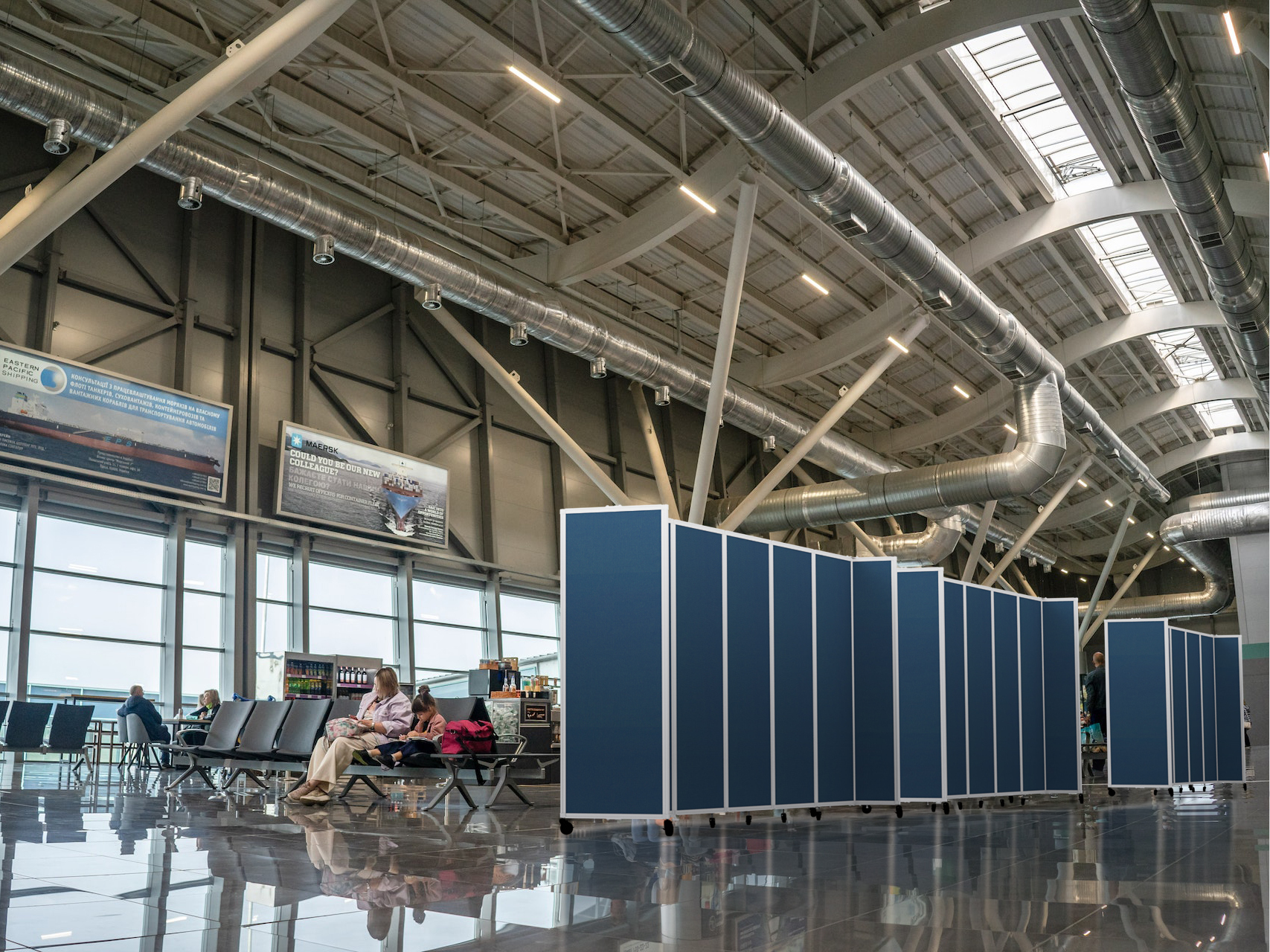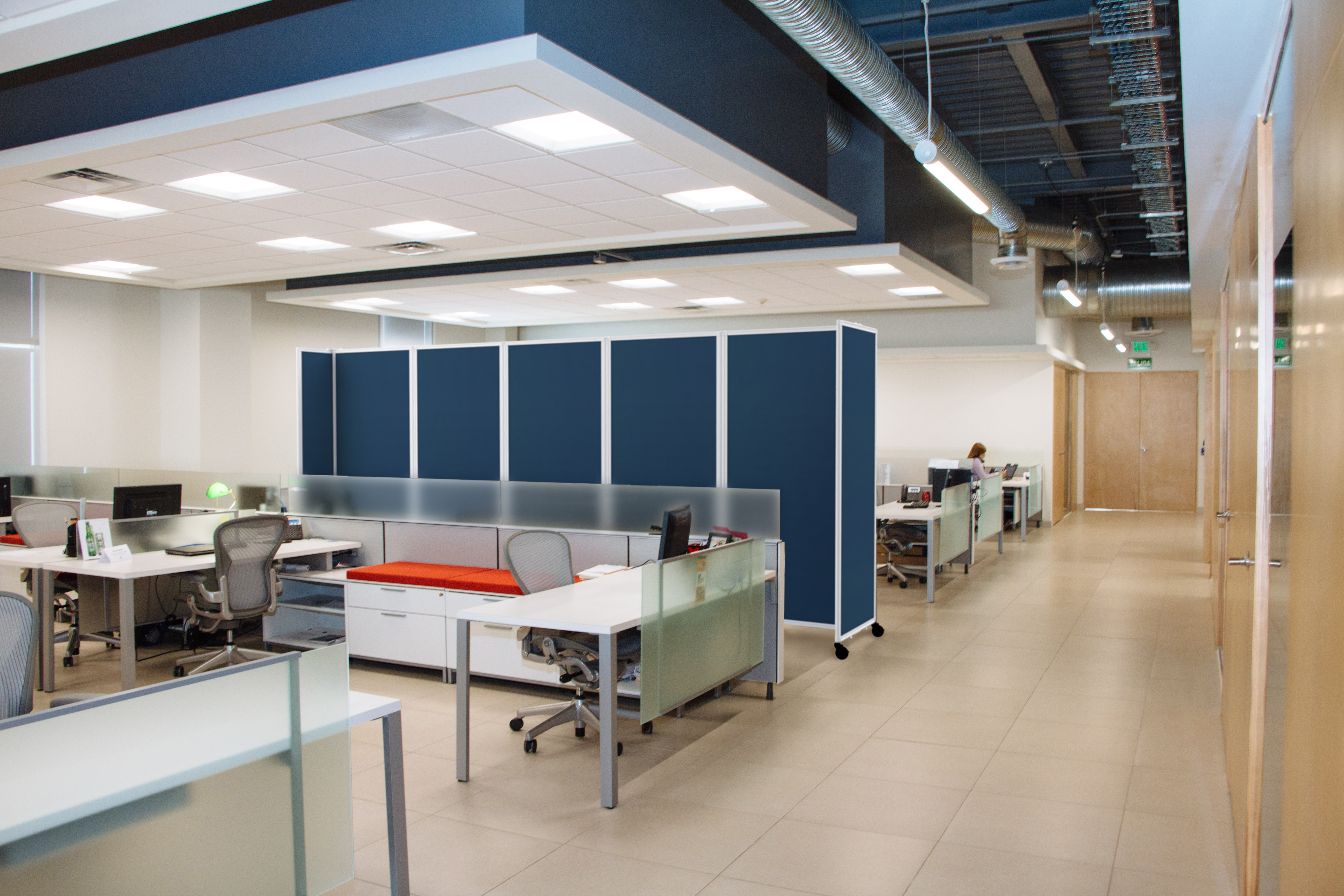The Complete Room Divider Buying Guide
Posted by Kate Murphy on Feb 12th 2025
Room dividers are an affordable, versatile solution for creating separate smaller areas in a room without the need for permanent walls. These chameleon-like wonders come in various designs, materials, and sizes, making them ideal for visual or auditory privacy and aesthetic appeal.
The multitasking geniuses of interior design, room dividers can freshen up any space and create multipurpose areas for corporate offices, classrooms, retail spaces, warehouses, libraries, conference rooms, play areas, government facilities—anywhere!
But what are the best room dividers and how do you decide what’s suitable for your space, needs, and budget? Shopping for the right room dividers can feel like navigating a maze of styles, materials, and price points. That’s where Versare’s expertise comes in. Here's your ultimate, comprehensive guide to choosing the perfect room divider that will transform your space into a stylish, practical haven.
What Are the Different Types of Room Dividers?
Here’s a lineup of creative and practical room divider options to transform your space, whether you’re looking for privacy, organization, or just a touch of flair:

Folding Room Dividers
Folding or accordion dividers offer flexible room separation with sound-dampening capabilities, perfect for creating privacy. These dividers can be portable or wall-mounted and easily folded away when not in use. Their collapsible design allows for compact storage, making them a great option for versatile spaces.
Sliding Room Dividers
Sliding dividers, like the Operable Wall™ Sliding Room Divider, provide smooth and space-saving separation between rooms. Mounted on tracks, they glide effortlessly to create a seamless divide. Ideal for spaces with limited room for traditional partitions, sliding dividers offer both style and function, enhancing the layout without taking up extra space.
Folding Wall Dividers
Folding wall dividers are typically floor-to-ceiling partitions that are mounted or installed within a building. Designed to separate large areas, these dividers are ideal for transforming expansive spaces like warehouses into smaller, more manageable sections.
Room Screens
Room screens are like folding screens but consist of a single panel, such as the Hush Screen™ Portable Partition. If a full room divider isn't necessary, room screens are a great alternative. You can also combine multiple panels, like with the Workstation Screen, to create larger privacy walls or smaller cubicle spaces.
Acoustic Panels
Acoustic panels are designed to dampen sound and reduce noise transfer between workstations. VersaPanel™ Acoustical Partition Walls are uniquely designed with noise-canceling features such as heavy foam cores and acoustic-ribbed fabric.

EverBlock® Modular Blocks and EverPanels®
Create versatile spaces with EverBlock® modular walls or EverPanel® systems. EverBlock® allows you to build custom walls with stackable, interlocking blocks, ideal for creating offices, display areas, and more. On the other hand, EverPanel® provides a more streamlined modular solution with pre-made panels that offer easy installation for quick space creation. Both offer flexibility, but EverBlock® provides a hands-on, block-building experience, while EverPanel® offers a faster, panel-based solution for dividing spaces.
Portable Whiteboard Partitions
Whiteboard partitions separate spaces while offering writable surfaces on one or both sides for brainstorming, presentations, or quick meetings. Perfect for flexible work environments, they provide an easy way to organize and create dynamic spaces without the need for permanent construction—ideal for offices, classrooms, or collaborative areas.
Bullet-Resistant Partitions
Constructed with advanced ballistic materials, bullet-resistant partitions are designed to absorb high-energy impacts, including multiple hits from powerful ammunition, providing reliable protection through innovative technology. Ideal for schools, government facilities, banks, retail spaces, and law enforcement settings, these partitions provide critical protection where safety is a priority.
Bookcases
Bookcases offer both storage and separation. These units, whether open-backed or with a back panel, can create visual or physical barriers. They’re perfect for storing books, decor, and personal items. Bookcases with doors or drawers can also help keep clutter out of sight. For safety, taller bookcases must be anchored to the wall to prevent tipping.
Clear, Polycarbonate, or Medical Room Dividers
Clear dividers, made from materials like polycarbonate, offer both privacy and visibility. Ideal for healthcare settings, they are durable, easy to clean, and help maintain a sterile environment in hospitals, dentists' offices, pharmacies, vet clinics, and more, providing a practical solution for maintaining social distancing without blocking sightlines.
Living Plant Divider
A living plant divider uses greenery to naturally separate spaces. Multi-tier stands or shelves create a “living wall,” while vining plants on trellises form vertical green partitions. It's a great way to add both functionality and beauty to your space.
Outdoor Partitions
Outdoor privacy screens are perfect for creating secluded, intimate spaces in your backyard or patio. Made from durable materials like weather- and UV-resistant fabric, treated wood, bamboo, woven wicker, or metal, these screens can withstand the elements while offering the privacy you desire.
Beaded Curtains
Beaded curtains, popular in the 1960s and ’70s, create transparent partitions using materials like bamboo, wood, glass, plastic beads, or shells. These playful dividers allow light to flow through while visually separating spaces. They fit well in Bohemian, retro, or sensory-rich environments.

How To Choose the Right Size and Height of Room Divider
Understanding Your Needs:
Before diving into dimensions, ask yourself these key questions:
-
What's the primary purpose of the divider? Are you seeking complete privacy, a subtle visual break, to direct foot traffic, or simply a decorative accent? This will heavily influence the height, width, and material you need.
-
Where will the divider be placed? Consider the dimensions of the room, the width of the space you want to divide, and the placement of furniture.
-
What's your desired level of privacy? For full privacy, you'll need a taller and less transparent divider. For a suggestion of separation, a shorter, more open design will suffice.
-
What's your style? The divider should complement your existing decor. Consider materials, colors, and overall aesthetic.
Choosing the Right Height:
When choosing a room divider, measure the space carefully—both height and length. Don’t forget to check the ceiling height too.
-
Low Dividers (3-4 feet): Ideal for subtly defining spaces without blocking light or creating a closed-off feeling. Perfect for separating a dining area from a living room or designating areas for co-worker collaboration. These are often used for decorative purposes as well.
-
Mid-Height Dividers (5-6 feet): Provide a stronger sense of separation and privacy while maintaining an open, collaborative atmosphere. Ideal for dividing workstations in an office, creating private meeting areas, or defining break zones in open-plan spaces.
-
High Dividers (6 feet and above): Offer maximum privacy and can create the feel of a separate room. Ideal for establishing private work areas or quiet zones for focused tasks, as well as concealing clutter.
Selecting the Right Width:
-
Consider the width of the space you want to divide. Measure the area and choose a divider that adequately covers the desired span.
-
Multiple panels offer flexibility. If you need to cover a larger area, consider a multi-panel divider that can be adjusted as needed.
-
Think about portability. If you plan to move the divider frequently, choose a lighter and more manageable width.
What Are the Price Considerations When Buying Room Dividers?
Budget plays a significant role in choosing a room divider. Understanding the factors that influence price will help you find the perfect divider without breaking the bank.
How Much Does a Room Divider Cost?
The cost of a room divider can vary dramatically, from super budget-friendly options around $100 to high-end choices that go well into the thousands. Several factors influence the final price:
-
Material: The materials used are a primary driver of cost. Dividers made from inexpensive materials like lightweight wood, fabric, or paper will generally be more affordable. On the other hand, those crafted from premium materials such as solid wood, metal, or high-quality woven materials will command a higher price. Consider the durability and aesthetic you desire when weighing material costs.
-
Size and Complexity: Larger and more intricate designs naturally require more material and labor, leading to higher prices. A simple, single-panel divider will typically be less expensive than a multi-panel or intricately carved outdoor privacy screen. Consider the size of the space you need to divide and the complexity of the design you desire when budgeting.
-
Craftsmanship: Handcrafted or artisan-made dividers will generally be more expensive than mass-produced options. The level of detail and skill involved in creating the divider contributes to its value. If you appreciate the unique character of handcrafted items, be prepared to invest a bit more.
-
Brand and Design: Recognized brands and designer pieces often come with a premium price tag. You’re paying not just for the product but also for the brand’s reputation and design aesthetic. While designer dividers can be beautiful and high-quality, there are also many affordable options that offer excellent style and functionality.
-
Features: Some room dividers come with added features like built-in shelves, bullet-resistant material, or lighting. These additions can increase the price but may also add value and functionality to the piece.
-
Retailer: Prices vary by store, so it’s wise to compare online and in-store options and look for sales or discounts.
Budgeting Tips
Finding the perfect room divider doesn’t have to break the bank. Keep these smart tips in mind to stay within budget while getting the best value for your space:
-
Set a Budget: Determine how much you're willing to spend before starting your search to narrow down your options and avoid overspending.
-
Prioritize Features: Decide which features matter most—such as material, design, or added functionality—to help allocate your budget wisely.
-
Shop Around: Compare prices from multiple retailers, both online and in brick-and-mortar stores, to find the best deals.
-
Look for Deals: Watch for sales, discounts, and coupons that can help you save.
-
Negotiate: Don’t hesitate to ask for discounts or special offers, especially for bulk purchases.
-
Consider Secondhand Options: Explore thrift stores, antique shops, and online marketplaces for unique, budget-friendly dividers.
What Is the Best Room Divider Material?
The material you choose for a room divider is crucial for both its aesthetic and functionality. Each material offers unique benefits, so consider your style, needs, and how long you want the divider to last when making your selection.
Here’s a more in-depth look at common room divider materials and their benefits:
-
Fabric: Soft and versatile, fabric dividers are lightweight and easy to move, making them perfect for temporary separation of spaces. They’re available in a wide range of colors, textures, and patterns, which makes them ideal for adding a personal touch. Plus, they can absorb sound, making them great for creating quiet, cozy spaces.
-
Metal/Aluminum/Steel: These materials offer sleek, modern aesthetics, and are known for their strength and durability. Metal dividers are ideal for industrial-style or minimalist spaces. Aluminum is lightweight and corrosion-resistant, while steel is heavier and more robust, providing extra stability. These materials are perfect for areas with high traffic or where durability is important.
-
Glass: Transparent dividers made from glass are excellent for maintaining a sense of openness in a room. They let in natural light while still providing separation between spaces. Glass offers an elegant look but requires more careful handling and maintenance.
-
Acrylic/Polycarbonate: Acrylic and polycarbonate are a more affordable, shatter-resistant alternative to glass, making it ideal for high-traffic areas. They are lightweight, easy to clean, and provide some transparency, allowing light to filter through while maintaining privacy. They’re perfect for environments where reliability and hygiene are essential.
-
Wood: Wooden dividers are timeless, providing warmth and elegance to any space. Wood can be crafted into various designs, from traditional to modern, and is sturdy enough for long-term use. Whether it’s a solid wood divider for complete privacy or a slatted design to let light through, wood adds a natural touch that works in almost any room.
-
Weave/Wicker: Lightweight and natural, these materials add a rustic or Bohemian touch, balancing openness and privacy. Ideal for creating relaxed, textured spaces, they’re perfect for small areas or temporary divisions in low-traffic environments.

Design Your Ideal Space with Versare Room Dividers
Versare understands that every space is unique. That’s why you get to choose from a wide range of room dividers in various designs, materials, price points, and sizes to perfectly complement your style. Beyond standard offerings, Versare also specializes in custom manufacturing to meet your exact needs and specifications.
Whether you’re looking to enhance a residential space with a touch of elegance or create a more functional commercial office environment, Versare room dividers are designed to impress. Contact Versare today for assistance finding the perfect solution for your space.


